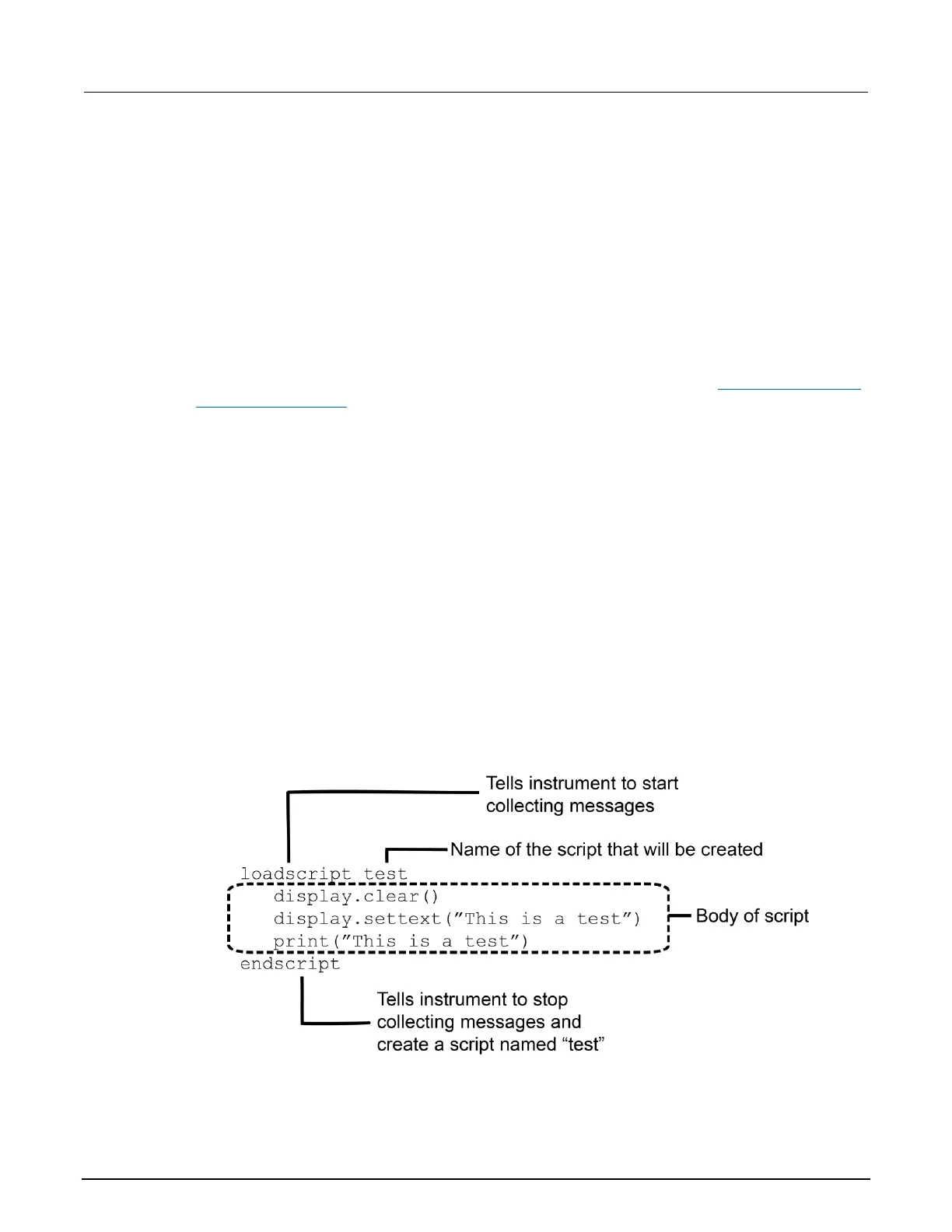Named scripts
A named script is a script with a unique name. You can have as many named scripts as needed in
the instrument (within the limits of the memory available to the run-time environment). When a named
script is loaded into the run-time environment with the loadscript or loadandrunscript
commands, a global variable with the same name is created to reference the script.
Key points regarding named scripts:
• If you load a new script with the same name as an existing script, the existing script becomes an
unnamed script, which in effect removes the existing script if there are no variables that reference
it.
• Sending revised scripts with different names will not remove previously loaded scripts.
• Named scripts can be saved to internal nonvolatile memory. Saving a named script to nonvolatile
memory allows the instrument to be turned off without losing the script. See Working with scripts
in nonvolatile memory (on page 10-9).
Load a script by sending commands over the remote interface
To load a script over the remote interface, you can use the loadscript, loadandrunscript, and
endscript commands.
The loadscript and loadandrunscript commands start the collection of messages that make
up the script. When the instrument receives either of these commands, it starts collecting all
subsequent messages. Without these commands, the instrument would run them immediately as
individual commands.
The endscript command tells the instrument to compile the collection of messages. It compiles the
messages into one group of commands. This group of commands is loaded into the run-time
environment.
The following figure shows an example of how to load a script named “test.” The first command tells
the instrument to start collecting the messages for the script named “test.” The last command marks
the end of the script. When this script is run, the message “This is a test” is displayed on the
instrument and sent to the computer.
Figure 119: Loadscript and endscript example

